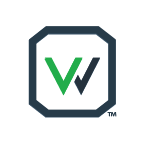Transforming Your Environmental Services Company with Technology: Vol 3 - Simple VS Easy
May 14, 2024

There’s a big difference between “simple” and “easy.”
Take golf for instance: the game itself is simple – the player hits a ball into a hole, and the fewer the hits the better their score. However, as simple as it is conceptually, golf is far from easy. True mastery of the sport takes a lifetime of practice and dedication, and even this doesn’t guarantee proficiency.
The environmental services industry tells the same tale. The goal is simple: to gather waste and dispose of it appropriately. However, this simple process is often a difficult one. As any industry veteran can attest, it’s never quite as easy as it should be to schedule an in-slot, to arrange transportation, or even to identify a waste stream.
At the end of the day, even a good digital solution can’t eliminate all of these challenges; somebody will always have to do the leg work. At WASTELINQ, we know that environmental services isn’t easy – but it can be simple.
A simplified approach to environmental services sounds good in theory, but what does it look like in practice?
Merriam-Webster provides two definitions of the term, the first of which is “readily understood or performed,” as in “simple directions.” As we’ve already established, the environmental services industry comes with a lot of moving parts, and although the individual tasks involved can be simple, the overall process can be quite complex. Thus, one way to make environmental services simple is to consolidate all work flows into a single process that is readily understood. In this way, a user can be reasonably assured that they did not skip any important steps by simply following the process. This is the approach used by WASTELINQ’s Order module: so long as the user follows its systematic process flow, it ensures that no critical items are excluded from the order document.
In addition to ensuring completeness, a simple process can free up resources by empowering any user to complete it rather than only those with specialized knowledge. This kind of simplicity can be seen in WASTELINQ’s Profile Assist tool: all the user has to do is provide a waste stream name and WASTELINQ’s proprietary waste profiling algorithm will ensure that all profile fields are populated so that the waste can be routed. Of course, it is still helpful to have someone with knowledge of the waste stream review the profile; however, the specialist is able to save time for more important tasks instead of data entry.
The second definition Merriam-Webster provides says that simple means “free of secondary complications” or “not subdivided.” This definition is particularly important in the waste industry, where the necessary processes can be quite elaborate and disjointed. When building a solution to such processes, it can be easy not only to miss steps, but to duplicate them. That means not only a lot of wasted work but also enhanced potential for mistakes, even potentially devastating mistakes. As a single source of truth for environmental services transactions, a digital solution can eliminate this redundant effort. For instance, consider a profile that needs approvals at multiple disposal outlets. Without a digital solution, a significant amount of time and effort can be lost in answering the same set of questions for each TSDF. This means a lot of duplication and, with each duplicative step, a lot of opportunities for errors. With WASTELINQ, on the other hand, the profile only needs to be filled out once before it can be routed to several disposal facilities, saving you both time and potential opportunities for mistakes.
Successful digital transformations consolidate steps, making them understandable, repeatable, and streamlined. In this way, while WASTELINQ can’t make environmental services easy, we can make it simple.